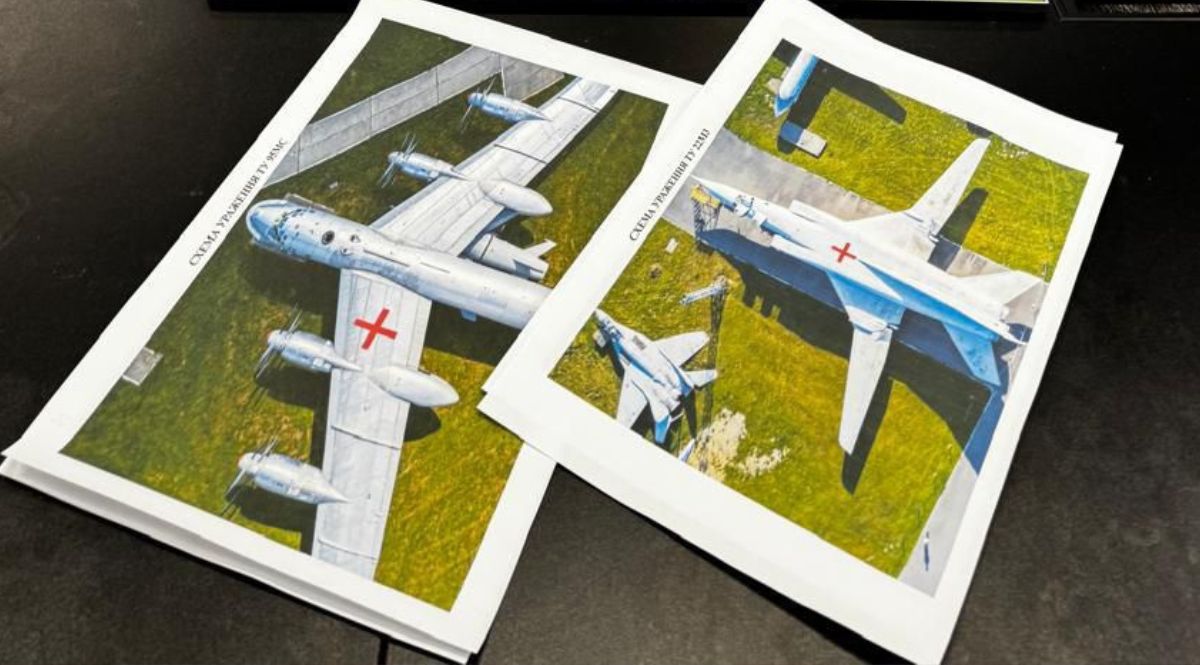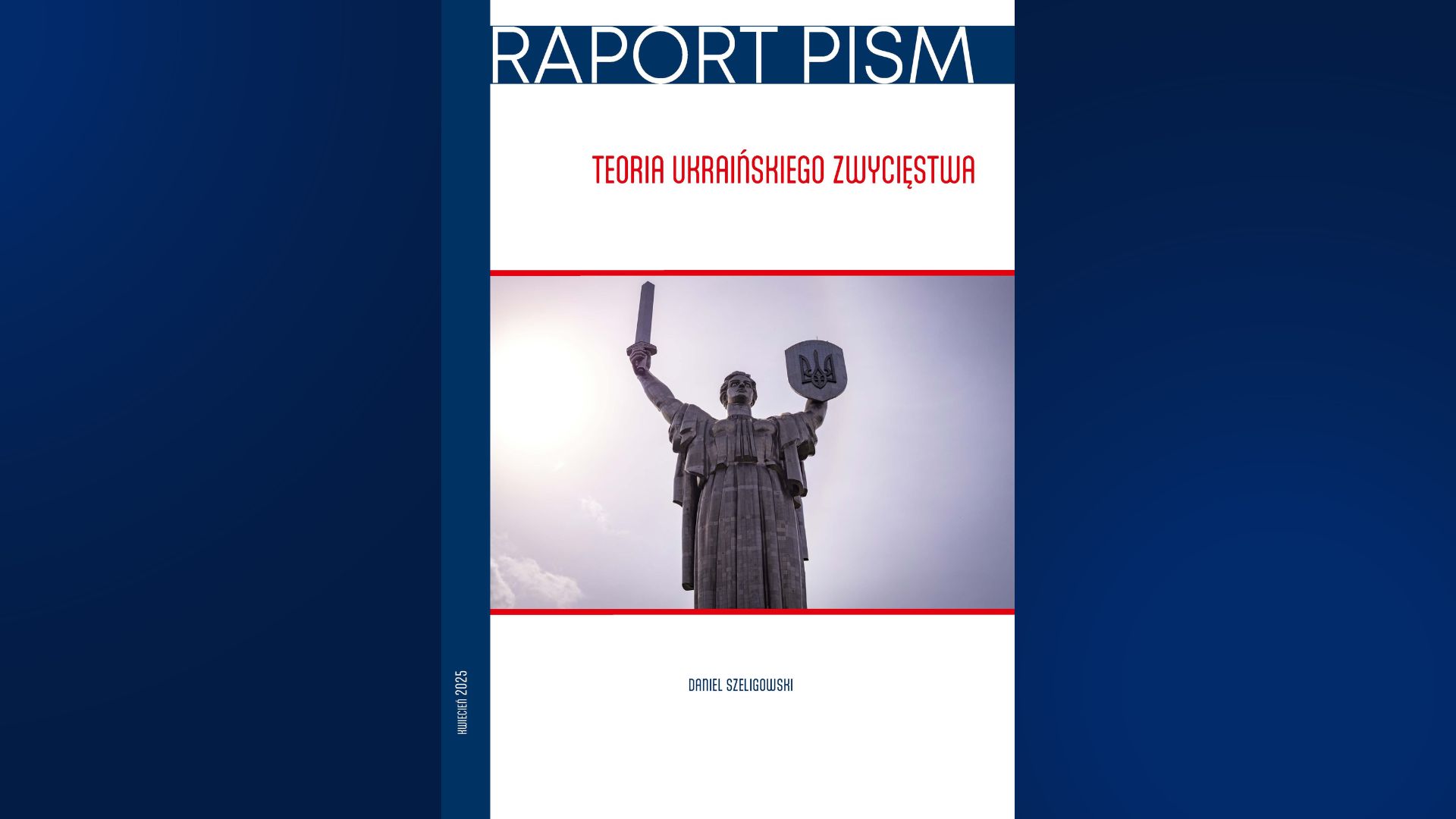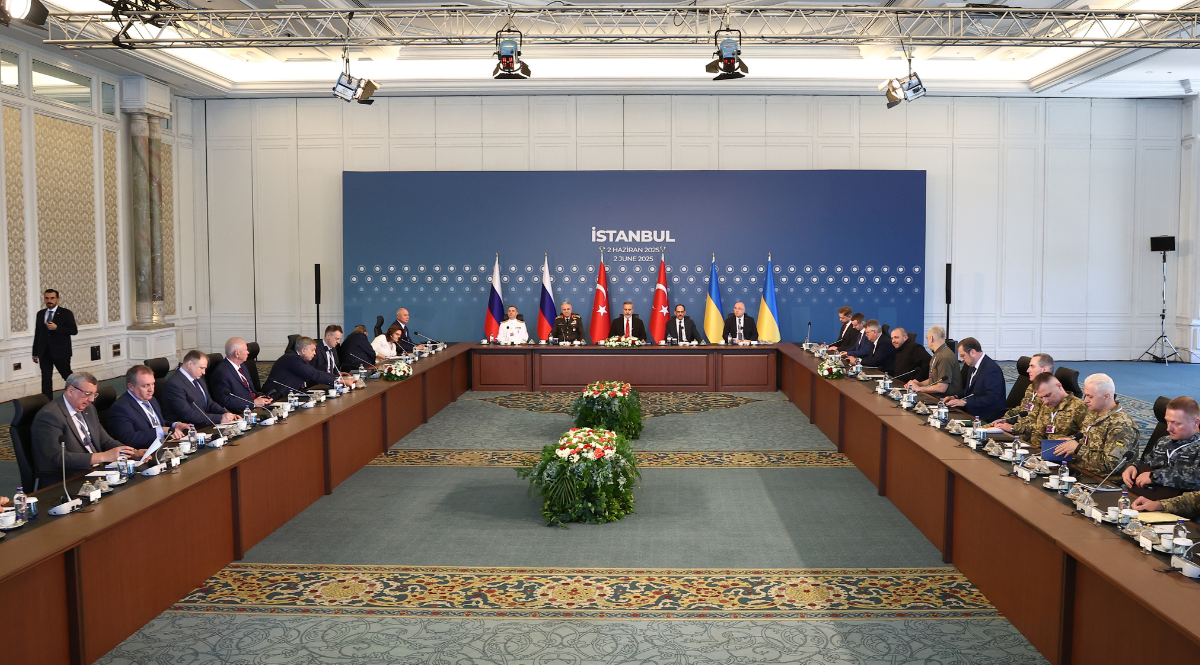Ukraine Attacks Strategic Bomber Bases in Russia
The Ukrainian attack on Russian strategic air bases carried out on 1 June will not change Russia’s approach to negotiations with Ukraine. However, it demonstrated that Ukraine has the ability to impose increasing military and economic costs on Russia. The spectacular operation will also boost Ukrainians’ morale and determination to defend themselves.
 źródło: Służba Bezpieczeństwa Ukrainy
źródło: Służba Bezpieczeństwa Ukrainy
The civilian Ukrainian Security Service (SBU) stated that it destroyed as many as 40 Russian aircraft, including strategic bombers used to attack Ukrainian territory. Later, the General Staff of Ukraine confirmed at least 12 destroyed bombers. They were stationed at Long-Range Aviation (LRA) bases in Belaya (Irkutsk Oblast, 4,300 km from Ukraine), Olenya (Murmansk Oblast, 2,000 km), Diagilevo (Ryazan Oblast, 500 km), and Ivanovo (Ivanovo Oblast, 800 km). The attack on the base in Ukrainka failed when a truck carrying several dozen drones exploded. Although Ukraine had previously carried out attacks deep inside Russian territory, this was the first time it had destroyed valuable targets more than 4,000 km from its borders.
The Course of the Operation
The attacks were carried out using over 110 small, armed drones hidden in containers loaded onto trucks. After parking the trucks near the bases, the Ukrainian services remotely opened the roof of each container, releasing the drones, which were then directed to their designated targets. This unconventional method made it possible to destroy targets, including those at the base in Belaya in the Far East. Drone camera footage and available satellite images have so far confirmed the complete destruction of two modern Tu-22M2 bombers, four Tu-95MS bombers, an A-50 early warning and electronic warfare aircraft, and an AN-12 heavy transport aircraft. Further drone footage, commercial satellite images, and analyses by NATO intelligence services should help reveal the true scale of the destruction and allow for verification of information from Ukrainian authorities regarding the destruction of up to 34% of Russia’s strategic air force, which numbered about 120 aircraft before the outbreak of the war.
According to Ukrainian authorities, preparations for the operation, codenamed Spider Web, took 18 months. These and other actions by the SBU and the military intelligence service HUR indicate the network of their operators on Russian territory is extensive. The Ukrainian authorities assure that not a single SBU officer or collaborator was lost during the operation, which if true is a significant success. They also claim that the centre from which the operation was coordinated was located on Russian territory near an FSB headquarters is intended to illustrate the incompetence of the Russian security services and force them to conduct internal inquiries.
Impact of the Attack on the Course of War
This is the most serious blow to Russia’s LRA resources to date. Russia lost four Tu-22 bombers, one Tu-95 bomber, and two A-50 aircraft in previous Ukrainian drone attacks. It had already been forced to move aircraft beyond the range of Ukrainian missiles and long-range drones, which made it more difficult to carry out attacks from Russian territory using air-launched Kh-101 cruise missiles. Now, that capability is further weakened and will be more complicated. Russia has multiplied the production of conventional Kh-101 missiles during the war, but even in the coming years it will not be possible to replace the Tu-22M and Tu-95 bombers that carry these missiles as they have not been produced for decades. Although in 2022, Russia announced it would begin building a newer generation aircraft, the Tu-160M2, only a few of this type have been delivered in the past few years. The loss of early warning and electronic warfare aircraft, which are essential for both effective defence and coordination of its own air and missile attacks, will be frustrating for Russia. However, it can compensate for these losses by using Shahed drones (which have a lighter warhead but are easier to intercept) and Kinzal air-launched ballistic missiles (more difficult to shoot down than cruise missiles) on an even larger scale.
The innovative nature of the multi-base attack demonstrates Ukraine’s ability to strike virtually any strategic target in Russia, which will have to commit even more resources to strengthening the protection of its strategic facilities. The latest operation is costly for Russia, both in terms of the materiel losses and the intensification of Ukrainian resistance. The spectacular SBU operation will boost the morale of Ukrainian civilians and military personnel, confirming the sense and determination of continued resistance to the Russian aggressor. Nevertheless, in the short term, it will not change Russia’s approach to negotiations with Ukraine. The Russian authorities will try to conceal the scale of the losses so as not to undermine the morale of their own society and military, and it will continue to make maximalist demands while remaining unwilling to discuss a ceasefire or even a suspension of attacks on Ukrainian infrastructure. Only a possible change in the U.S. administration’s approach to the negotiations with Russia, combined with Ukraine’s re-affirmed ability and determination to defend itself and the rising costs of the war on the Russian side, could change Putin’s calculations.
Consequences of the Attack for Russian Nuclear Deterrence
Although the destruction of several or more long-range bombers weakens Russia's nuclear potential, it will not noticeably change Russia’s approach to threatening nuclear escalation. Nor has it undermined Russia’s second strike capability, which relies mainly on sea-launched ballistic missiles on submarines (SSBNs) and land-based intercontinental ballistic missiles (ICBMs) on mobile land platforms or in special silos. Strategic bombers are the weakest element of Russia’s strategic triad. Their main use is to strike targets with cruise missiles with conventional and/or nuclear warheads. In the event of a strategic attack on Russia, some of them may take off before the enemy’s ICBMs reach their target, which increases the possibility of a counterstrike. In other escalation scenarios, they offer clear signalling that an attack using bombers will be limited in nature and not directed, for example, at the United States. These platforms give the Russian authorities greater control of escalation at lower levels before a strategic nuclear exchange takes place. In recent years, bombers have mainly been used to carry out conventional attacks on targets in Ukraine and to simulate attacks on targets in Europe. The losses of such aircraft will not significantly affect Russia’s use of the bombers for nuclear signalling to intimidate NATO countries.
Conclusions for Poland and NATO
The effectiveness of Ukraine’s surprise attack deep inside Russia shows that countries that do not have national nuclear deterrence capabilities can still develop a doctrine of conventional and unconventional attacks on an adversary’s nuclear structures in order to weaken it and limit the damage associated with a possible attack on their territory (damage limitation). However, this requires, above all, the development of capabilities such as deep precision strike (ballistic and/or cruise missiles), air and missile defence systems, electronic warfare and intelligence, and surveillance and reconnaissance (ISR). Drones are and will remain only a supplement to such capabilities, but their effectiveness is growing with the development of technology (e.g., artificial intelligence) and coordinated actions in various domains (e.g., attacks using missiles and drones and attacks in cyberspace).
The credible threat of attacks on Russia’s military nuclear apparatus may also be used as leverage to encourage the U.S. to maintain its military presence and credible nuclear deterrence in Europe. According to Russia’s current military doctrine, attacks on its nuclear potential that undermine its second-strike and/or nuclear deterrence capability may prompt a nuclear response. Allies can therefore point out in their contact with the U.S. administration that unilateral actions (e.g. the withdrawal of troops without coordination) will undermine the credibility of the U.S. and may prompt its allies to take unilateral actions, increasing the risk of nuclear escalation.
At the same time, Poland and other NATO countries must reckon with the threat of drones being used to attack their military facilities, including those located far from the frontlines. The ability of Poland and NATO to quickly resolve a possible conflict with Russia in their favour will depend on achieving air superiority. Therefore, Polish and allied air forces will be the main target of Russian air and missile attacks, including through the use of various types of drones. To minimise the risks, it is necessary to review the procedures for protecting air bases and the aircraft stationed there. It should be assumed that drones may be used not only for an attack in the open but also to enter reinforced hangars where the most important and valuable aircraft are stationed.






